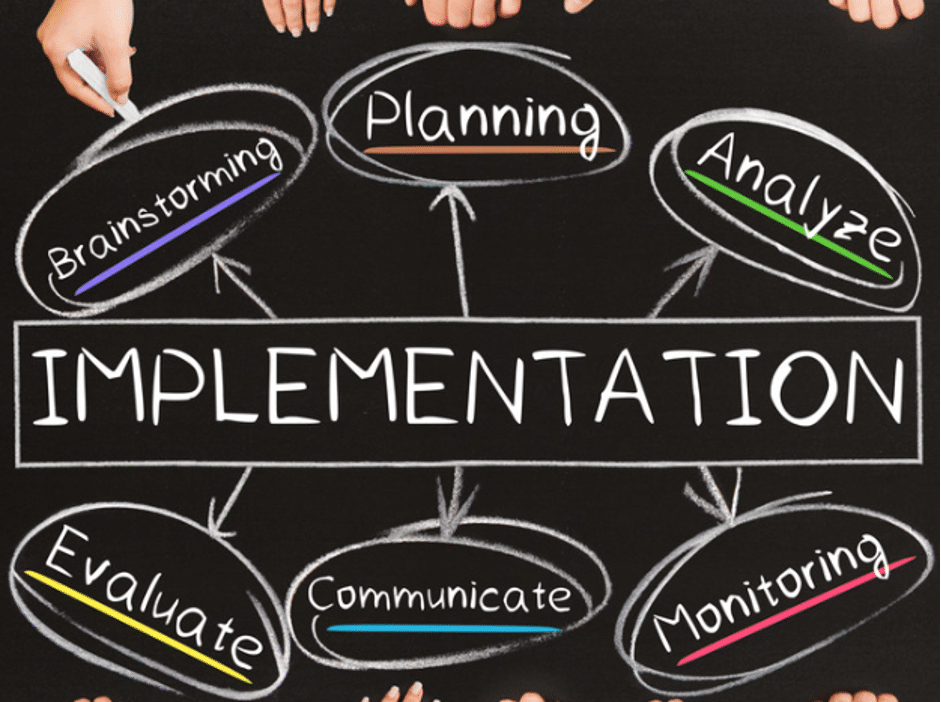1. Introduction
SAP is not just another software package. Once it is implemented, it touches processes, roles, even business models. Finance closes differently. Warehouses pick stock in a new sequence. Managers see new data and sometimes make different calls.
That kind of reach can feel overwhelming, especially for teams without a technical background. I have watched smart people stare at project slides and wonder where to begin.
So why write one more guide? Because the jargon can get in the way. Don’t you think so? Many articles either oversell the promise or hide the hard work. Neither helps. You need clear language, real steps, and a sense of what the journey truly involves.
This article breaks down what is SAP implementation, from strategy to system go-live and beyond. I’ve tried to simplify it for you and give you what you need. No secret shortcuts.
Just a straightforward walk through the phases, the common bumps, and the people who make it work. If you have wondered what it takes to move from blank page to working system, the next sections should help.
2. What Is SAP Implementation?
SAP implementation is the structured path a company follows to move from its current systems to a working SAP environment that supports daily operations. It covers much more than installing software. It shapes workflows, data structures, and how people do their jobs.
Whether you choose SAP S ⁄ 4HANA Cloud, with infrastructure wrapped into a subscription, or an on-premise version that runs on your own servers, the steps stay broadly similar.
Typical phases look like this:
- Planning and discovery
- Blueprint or design sessions
- Configuration of modules and security
- Unit and integration testing, followed by user acceptance testing
- Training for end users and support teams
- Deployment and go-live
- Ongoing support and optimisation
The details change depending on industry, size, and goals. A manufacturing plant may focus heavily on production planning and shop-floor control. A retail chain cares more about point-of-sale data, fast inventory turns, and real-time pricing. Both still walk through the core phases, yet the depth in each area varies.
Every implementation ends up looking slightly different. A small regional distributor can finish in six months with a lean scope. A global producer might take two years, multiple waves, and advanced integrations. Understanding that variability sets realistic expectations and keeps surprises lower once the project starts.
3. Key Phases of SAP Implementation
Most SAP projects follow a structure called SAP Activate. It lays out the journey in six phases: Discover, Prepare, Explore, Realize, Deploy, and Run. Sounds formal, but once you’re in it, it becomes pretty hands-on.
a. Prepare
This is the part where things start to feel real. Teams get formed, scope gets nailed down, and the big-picture plan is laid out. You also decide on your implementation partner around this time. Some go with SAP, others bring in outside help. Either way, this is when tools are set up and expectations are aligned.
b. Explore
Now comes the hard questions. How do your current processes stack up against SAP’s standard setup? Where are the gaps? Teams sit in workshops, walking through real-life scenarios. I remember one retail team spending hours just on returns logic. This phase helps define what will be built and what might stay as-is.
c. Realize
This is where the heavy lifting happens. SAP modules get configured. Custom reports, workflows, and any needed automation start to take shape. You run tests, review results, fix errors, then test again. It is a grind, but it is also where the system becomes recognizable.
d. Deploy
At this point, the system moves to production. But before that, final training, cutover planning, and data loading all come together. I have seen mock runs go late into the night. The go-live date gets a lot of attention, and for good reason, it sets everything in motion.
e. Run
Even after go-live, the work is not done. You shift into support mode. Users raise tickets. Small issues get resolved. Enhancements start to get listed. This phase is less intense, but no less important. A strong support structure here makes a big difference.
Throughout all of it, three things help:
- Keep communication frequent
- Involve business users, not just IT
- Test like real work depends on it, because it does
SAP Activate gives structure, but it is how your team handles the details that really shapes the outcome.

4. Types of SAP Implementation Approaches
There is no one-size-fits-all way to roll out SAP. Different companies choose different paths depending on how much change they can handle, how fast they need to move, and how much risk they are willing to take on. The three main options are Big Bang, Phased, and Hybrid.
- Big Bang means everything goes live at once. It is intense. All modules switch over on the same day, and that can be chaotic. But it also means a clean cut. No juggling old systems. This approach works best for smaller companies or ones that have simple, well-aligned processes. The trade-off is risk. If something breaks, there is no fallback.
- Phased rollout spreads the go-live across time. You might start with Finance, then Sales, then Procurement. It lowers the risk but stretches the timeline. It also adds cost because you are supporting old and new systems at the same time. Larger companies often choose this route.
- Hybrid sits somewhere in the middle. Maybe one region goes live first. Or one business unit. It is flexible, but that also means more planning and coordination.
Some quick notes:
- Big Bang: faster, riskier, lower support cost after go-live
- Phased: slower, safer, but heavier on internal effort
- Hybrid: flexible, but hard to manage without strong leadership
From what I have seen, the size and complexity of the business usually drive the choice. But even then, the final call often depends on how much disruption leadership is willing to absorb in the short term.
5. Common Challenges in SAP Projects
A lot of SAP projects hit trouble not because of the software, but because of things that feel small at first. But they add up fast. I have seen this happen more than once, and usually, it is not one big mistake. It is a series of avoidable ones.
Here are a few that come up a lot:
- Unclear goals. If no one agrees on what the system is actually supposed to fix, everything else becomes harder. I worked with a team once where two departments were solving different problems entirely. That confusion delayed the whole build by a month.
- Data cleanup gets ignored. Old systems have messy data. Names, dates, duplicate records. It looks fine until you try loading it into SAP. Then things start breaking. And suddenly, you are spending weeks fixing issues that should have been caught early.
- Users are not involved. I remember one case where the warehouse team saw SAP for the first time during testing. Within an hour, they spotted five things that made their daily work harder. All avoidable, if they had been included sooner.
- Too much customization. Every small request to make SAP “feel like the old system” adds work. Extra testing. More bugs. It becomes hard to tell what is standard and what is custom.
- Timeline slip. It usually starts small. One week here, another there. But by the time you reach go-live, there is no room left. People end up working weekends, and quality drops.
Most of these are preventable. But only if you slow down early and let people ask hard questions before decisions are locked in.
6. Who’s Involved in an SAP Implementation
Getting SAP live takes more than just technical know-how. It depends on people from across the business stepping into clear roles early.
Internally, you will need a mix of:
- Process owners from departments like finance, supply chain, operations
- IT team to manage infrastructure, access, and technical integration
- Super users who help test early and support training later
These are the folks who know how things work today. Their input keeps the design grounded.
Externally, most teams bring in:
- SAP consultants to guide configuration and workflows
- A system integrator or delivery partner to manage the build
These roles only work well if responsibilities are defined up front. If they are not, you start seeing missed decisions and blurred ownership. I have seen projects slow down simply because no one knew who was driving a key process. Even smaller implementations need cross-functional ownership, especially after go-live when real accountability kicks in.
7. SAP Implementation Timeline and Cost
No two SAP projects run on the same timeline, but there is a general range you can expect. Smaller builds might finish in six months. Larger, multi-country implementations could stretch to eighteen. That timeline often depends on how many modules are included, how ready the data is, and how quickly decisions get made.
Cost follows the same pattern. I have seen small teams roll out a limited scope with under $250,000. I have also seen global programs cross the $10 million mark. What drives it? A few key things:
- Number of users
- Number of modules (Finance alone is not the same as Finance plus Supply Chain and Production)
- Partner model (hourly vs fixed bid, location-based rates)
- Internal resource effort and any custom development
One thing to plan for early is Total Cost of Ownership, not just the upfront cost.
8. Do You Need SAP Implementation?
Wondering if it is time to move to SAP? The answer often shows up in everyday pain points. Data lives in five different spreadsheets, and each tells a slightly different story.
Teams still track orders or inventory by hand, then spend hours reconciling numbers. Month-end reports arrive late, and compliance checks feel rushed.
If any of that sounds familiar, you may be ready for a more integrated system. Here are a few clear signs:
- Data scattered across multiple platforms
- Key processes managed with manual workarounds
- Reports or compliance tasks consistently delayed
SAP shines when a business is growing and needs a platform that scales without adding more spreadsheets or bolt-on tools. It pulls information into one place and automates repetitive steps so the team can focus on decisions rather than data wrangling.
That shift does not happen overnight, but when growth demands clearer insight and tighter control, an SAP implementation often makes the difference between keeping up and falling behind.
9. Final Thoughts
Implementing SAP is not simply flipping a switch. It is a structured project that lines new technology with real business needs and daily habits. Preparation, not the software alone, decides whether the rollout feels smooth or chaotic.
Clear goals, clean data, and steady user involvement carry more weight than any advanced feature on a slide deck. If you are planning a project or perhaps find yourself midway and unsure about the next step, feel free to reach out.
You can also explore the strategy articles on my website site for deeper guidance. The right plan today will save time, cost, and stress tomorrow.

Ready to streamline your operations?
Take a few minutes to look into SAP implementation strategies. They offer more flexibility than most people assume. Even a short discussion can make the options clearer. You can read more about my work and experience at noeldcosta.com.
About the Author:
Noel D’Costa is an experienced ERP consultant with over two decades of expertise in leading complex ERP implementations across industries like public sector, manufacturing, defense, and aviation.
Drawing from his deep technical and business knowledge, Noel shares insights to help companies streamline their operations and avoid common pitfalls in large-scale projects.
Passionate about helping others succeed, Noel uses his blog to provide practical advice to consultants and businesses alike.
